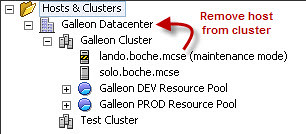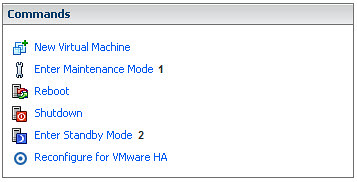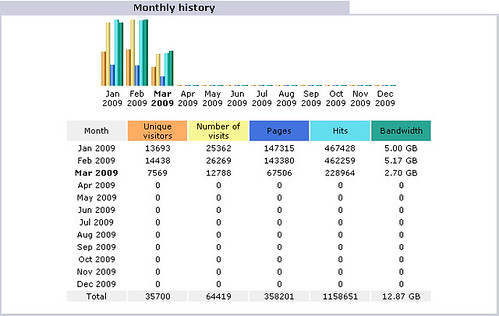Hyper9 Unveils Eagerly Awaited Flagship Product that Supports the Management of Virtual Infrastructures
While Affordably Priced, Unique Approach Offers Immediate Benefits and Is As Easy To Use as a Consumer Application
Austin, TX (March 18, 2009) – Hyper9, Inc. (www.hyper9.com), the leading provider of solutions that help virtual infrastructure administrators manage their virtualized environments, announced today the general availability of Hyper9, a product that leverages Internet and virtualization management technologies to manage change, configuration and performance issues in a modern, efficient way.
“Today’s VI administrators must navigate a very challenging virtual environment,” said Chris Ostertag, CEO and founder of Hyper9. “Until now, they lacked an efficient way to collect, negotiate and analyze information regarding their virtual server infrastructures. Hyper9 also allows them to customize how they see and manage that information, and as a result work smarter.”
Built for VI administrators by VI administrators, Hyper9 is a simple, yet powerful enterprise-class product that is ideally suited for managing virtual server infrastructures. It enables monitoring, troubleshooting and reporting on virtual infrastructures like nothing else in the marketplace. It accomplishes this without agents, tree views, spreadsheets, or multiple tools.
Among the key product features are:
- Search: Search across your entire virtual universe, from the hypervisor to inside the guest.
- Alert & Monitor: Build queries to monitor your environment from inside the guest and across your virtual infrastructure. Set up alerts to track changes and keep on top of problem solving.
- Compare: Analyze historical data about your virtual machines, such as how they’ve changed over time, with Hyper9 VMDNATM.
- Report: Slice and dice data, generate performance charts and reports for management and colleagues.
- Collaborate: Store and manage your searches, lists and reports and invite colleagues into your workspace.
Not surprisingly, the product has earned praise from analysts and beta customers alike.
Gartner Inc. recently included Hyper9 in a report that highlights a handful of innovative technology companies in the “IT operations and virtualization” space. Gartner Analyst Cameron Haight wrote that “Hyper9’s product uses an agentless management approach to gather key data from multiple sources. Current and historical performance information is made available and you can track how virtual machines have changed over time and have alerts issued when configurations have drifted from a standard template.”
Rich Brambley, a leading virtualization expert, blogger (http://vmetc.com/) and an early beta tester of Hyper9, recently described the product on his blog:
“Hyper9 provides some powerful reporting, monitoring, and analysis capabilities. You also have the option to save your searches for reuse again and again. Not only can you use keyword based queries, but there are pre-built criteria for all VI object fields. For example, you can find all VMs based on a version of the VM Tools, whether the CDrom is connected, or the existence of a snapshot.”
“As if that wasn’t enough, Hyper9 also has the ability to compare objects – both for current state analysis and for understanding changes over time. The comparison can take place using the same VM or 2 different VMs. Hyper9 calls this feature VMDNATM, and it’s a great feature for examining configuration history.”
In addition to the Hyper9 product being made available at the web site, the H9Labs Search Plug-in for VI Client is also ready for download. This software was developed by a well known developer in the VMware community, Hyper9’s own Andrew Kutz, who was recently named a vExpert by VMware. H9Labs’ Search Plug-in gives the VMware VI Client 2.5 auto-complete search capability from inside the guest across your virtual infrastructure.
Hyper9 is now ready for administrators to download at www.hyper9.com for a free trial or purchase. Pricing for Hyper9 starts as low as $25 a month. The H9Labs Search Plug-in is now available at http://store.hyper9.com/ as a free download.
About Hyper9
Hyper9 is a privately held company backed by Venrock, Matrix Partners, Silverton Partners and Maples Investments. Based in Austin, Texas, the company was founded in 2007 by enterprise systems management experts and virtualization visionaries. Since then, Hyper9 has collaborated with VI Administrators as well as systems and virtualization management experts to develop a new breed of virtualization management products that leverages Internet technologies like search, collaboration and social networking. The end result is a product that helps administrators discover, organize and make use of information in their virtual environment, yet is as easy to use as a consumer application. For more information about Hyper9, visit www.hyper9.com.
All product and company names are trademarks of their respective companies.
Hyper9 Introduces Alert & Monitoring Applet
Applet Makes It Easier and More Affordable for Administrators to Monitor Virtual Environments from Inside the Guest and Across their Virtual Infrastructure
Austin, TX (March 19, 2009) – Hyper9, Inc. (www.hyper9.com), the leading provider of solutions that help virtualization infrastructure administrators manage their environment, introduced today the H9Labs Alert & Monitoring Applet, which makes it easier and more affordable for VI Administrators to solve problems and make better decisions.
The announcement comes on the heels of the company’s launch of its flagship product, which provides administrators with a more holistic view of the virtual infrastructure that they manage. Hyper9, affordably priced at $25 a month, is now available for download at www.hyper9.com, while the add-on applet is free to all Hyper9 trial download users and customers, and can be downloaded at: http://store.hyper9.com/product-add-ons.
The applet allows administrators to monitor and set up alerts against any facet/data point in their virtual environment. More specifically, it provides administrators with the ability to:
- Proactively manage and solve infrastructure challenges;
- Monitor configurations and issue alerts when configurations drift from a standard template; and
- Track, monitor and set up alerts for: new virtual machines, VMs missing important Hotfixes, new applications installed, VMotion activity and more.
“This product reflects the wants and desires of VI Administrators, who have told us that they want an alert and monitoring applet that is both customizable and easy to install,” said Chris Ostertag, CEO and founder of Hyper9. “It also demonstrates our commitment to providing VI Administrators with the products and tools that will help them make smarter decisions when it comes to managing their virtual infrastructure.”
That “commitment” is obvious to at least one administrator.
“As an engineer that manages many different aspects of my environment, I spend only about 30 percent of my day in my VI3 environment, and often do not have my Virtual Infrastructure Client running,” said Jase McCarty, vExpert of McCarty Technical Consulting (http://www.jasemccarty.com/). “The H9Labs Monitoring and Alerting Applet fills an important gap for me, when my attention is focused elsewhere. The ability to create custom alerts for hosts and guests using extended attributes, not available from VMware, with a simple query, is simply awesome. I had several alerts configured in just a few minutes.”
About Hyper9
Hyper9 is a privately held company backed by Venrock, Matrix Partners, Silverton Partners and Maples Investments. Based in Austin, Texas, the company was founded in 2007 by enterprise systems management experts and virtualization visionaries. Since then, Hyper9 has collaborated with VI Administrators as well as systems and virtualization management experts to develop a new breed of virtualization management products that leverages Internet technologies like search, collaboration and social networking. The end result is a product that helps administrators discover, organize and make use of information in their virtual environment, yet is as easy to use as a consumer application. For more information about Hyper9, visit www.hyper9.com.
All product and company names are trademarks of their respective companies.




















